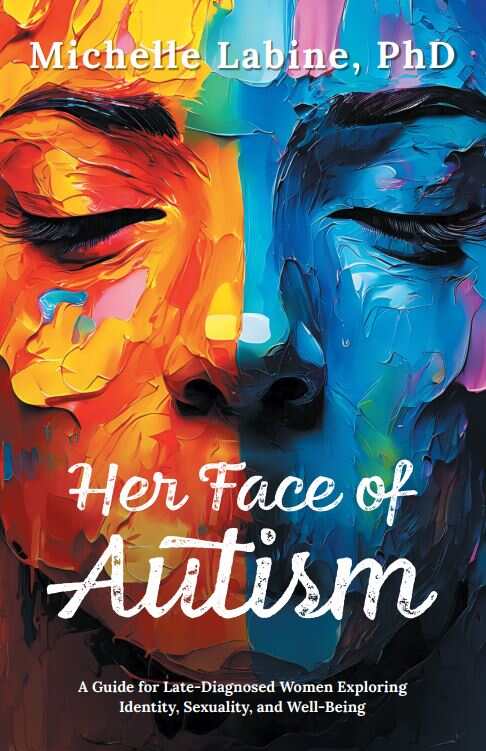
Her Face of Autism
A Guide for Late-Diagnosed Women Exploring Identity, Sexuality, and Well-Being
Acknowledging the diverse and personal nature of autism, Her Face of Autism is a compassionate guide.
Psychotherapist and sex therapist Michelle Labine’s compassionate guide Her Face of Autism is about late autism diagnoses in women.
The autism diagnosis of Labine’s child made her reflect on her own experiences with social anxiety, routine rigidity, and sensory issues. She was herself diagnosed with autism in middle age. She draws upon that personal knowledge in this guide for women who were also diagnosed late in life or who suspect they are autistic. The text defines autism and its varied symptoms in the context of adult women’s lives, noting that women are taught how to hide social issues, sensory sensitivities, and sexual difficulties, making the detection of autism harder and leading to delayed acceptance of external support.
The book’s in-depth definition of autism spans two full chapters, delving into myriad signs and symptoms, including executive dysfunction, heightened sensitivity to sound and light, and manual rather than intuitive processing of social cues. This expansive definition acknowledges the diverse and personal nature of autism and recognizes that broad generalizations of autism contribute to delayed diagnoses and feelings of alienation. The assertion that “you do not need an official diagnosis” to “advocate for what you need to be successful in life” widens the scope of the book to incorporate empathy for those without the resources to attain a diagnosis; still, the analyses and advice remain targeted.
Navigating the stigmatized sexual well-being of autistic women takes center stage in the book’s latter half, which shares the stories of autistic women who faced the struggles outlined in its chapters, showing masking and sensory issues in action. But some generalizations are made, and there is some vagueness in the language of the text. Its discussions of sensory sensitivities and struggles with picking up on social cues come without sufficient specifics. For instance, a woman’s partner is reported to have “misinterpreted her direct communication style and her need for solitude as coldness or emotional distance. He dismissed her sensory sensitivities, labeling them as overreactions or dramatics,” but the subsequent list of such struggles and their consequences is too academic.
In general, though, this is an empathetic text. It employs “we/our” throughout to convey Labine’s personal familiarity with the subject, and it takes pains to show respect for autistic women’s intellect and desire for self-awareness and self-actualization. The reflection questions at the end of each chapter, though, are too amorphous and repetitive, asking “What influence does autism have on you?” and “What influence does autism have on your relationships, communication, and sexual identity?” More varied and specific are the book’s suggestions for adapting, including ways to support sensory needs during intimacy.
Her Face of Autism is a humane and encouraging guide for autistic women who want to reframe their personal, social, and sexual identities after diagnosis to be more compassionate with themselves.
Reviewed by
Aimee Jodoin
Disclosure: This article is not an endorsement, but a review. The publisher of this book provided free copies of the book and paid a small fee to have their book reviewed by a professional reviewer. Foreword Reviews and Clarion Reviews make no guarantee that the publisher will receive a positive review. Foreword Magazine, Inc. is disclosing this in accordance with the Federal Trade Commission’s 16 CFR, Part 255.
